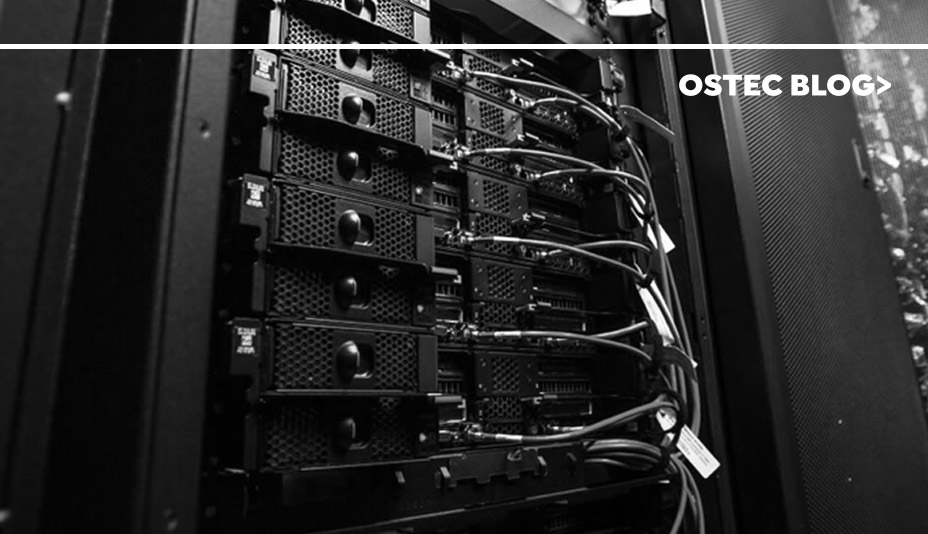This post is also available in: Português English Español
[vc_row row_type=”row” use_row_as_full_screen_section=”no” type=”full_width” angled_section=”no” text_align=”left” background_image_as_pattern=”without_pattern” css_animation=”” css=”.vc_custom_1507479057948{padding-top: 25px !important;padding-bottom: 25px !important;}”][vc_column][vc_column_text]Awareness of the importance of information security has been growing in recent years. Moreover, this is in not only the corporate market, governments or larger companies. The need for security is for everyone, from small businesses to citizens in their homes. For companies, especially, the offerings of security solutions are numerous, contemplating needs of varied sizes and segments.
For a government or a large company, the need for security is not new, in many cases it is a question of survival, and even of national security. Because of this, these companies make massive investments; otherwise, highly valuable data could easily be exposed, causing immeasurable damage.
Smaller markets are becoming aware of the importance of virtual security in many ways. This is either by desire to better control access to the Internet, increasing productivity, that is, by protection against opportunistic attacks, greatly enhanced in the past two years by the variants of ransomware, or by the need to maintain the availability of the Internet as a strategic resource for the business.
Targeted and opportunistic attacks have big differences. Highly organized and funded groups that aim to access or steal some valuable information usually conduct the first one. In these cases, you know exactly what the target is. Large corporations and governments are often targets of these types of attacks.
On the other hand, opportunistic attacks are due to massive Internet scans, looking for some fragility in a certain network or equipment that, from the moment it is compromised, becomes known and often controlled by the attacker.
The biggest problem for smaller companies, or even people, is precisely the potential for opportunistic attacks. The premise “I am small, no one knows me and will never attack my company” is not applicable to opportunistic attacks, thus, protection is essential for all sizes of business.
Another important aspect to consider is that security is not only related to the protection and confidentiality of information, but also much focused on its availability, especially nowadays, when there is an increasing dependence of companies on the use of the Internet. Therefore, even though your company does not store sensitive data, the daily dependence on the internet resource certainly requires special care in maintaining the availability of this asset, avoiding damages to the business.
Perimeter Security
The concepts of information security, including perimeter security, derived from military terms, so it is not just a coincidence that some words are used. The perimeter is nothing more than an imaginary line separating a company (its computers, servers, etc.) from other networks (usually the internet).
This line is formed by a device that provides communication between networks, usually represented by a router or device with similar purpose, attached or sequenced from a security device, called firewall, or according to the current terminology, Next-Generation Firewall.
Once a firewall establishes a “funneling” between the Internet and organization’s internal networks, it is possible to create control mechanisms to prevent two-way attacks, as well as to ensure what is actually accessed, allowing better use of the internet resource within the environment.
Because of this, perimeter security remains a primary and extremely important link to any organization that wants to be more secure, when using the internet. The same goes indoors; many devices already come with controls to bring this type of security to homes, bringing elements such as parental control and other facilities.
Perimeter security has changed over time
The perimeter is not the only thing to consider in a layered defense structure, but it is the first protection of the external world into organizational structures. Over the last few years, with constant need for mobility, the positioning of the perimeter has changed substantially.
Previously the information was inside the company, until it was possible to access remotely through the internet, but the storage remained in the companies. All or most of the strategic systems ran on their own servers, which were inside the company, most of them without external access. Cloud information was not a reality; many companies today keep part or much of their structure in remote services accessed through the internet.
What exactly does that mean? The perimeter is increasingly individualized, because devices are loading or accessing more and more corporate information, from anywhere, anytime (and most policies allow it, unfortunately). This requires companies to rethink perimeter defense, no longer analyzing what lies within the organization, but everything that carries or accesses information about it, that may be sensitive, or that somehow must be protected or have some control.
It is no longer a security guarantee to keep a next-generation firewall within the company and allow users to access e-mail, files, and systems from any computer or device outside the company. If these devices do not have minimum compliance with security solutions, the risk of an attack is very high.
In fact, this change in perimeter location is the major cause of targeted attacks these days. Is that you? How are you preparing your home, your devices and your company for these new perimeter challenges? Interact with our blog post and tell us your experience.[/vc_column_text][/vc_column][/vc_row]
This post is also available in: Português English Español










